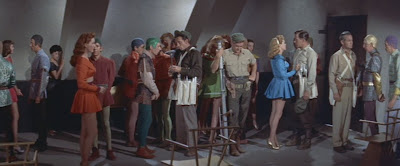ILLUSTRATION: JEANNE KOSFELD ©2020
Today’s featured author is Terry Faust, another author returning to our pages, and his contribution to Stupefying Stories #23 is “The Secret of Erin Stewart,” a mystery/police procedural story that should touch the heart of any true Minnesotan, you betcha. About this story Terry says—well, he says quite a lot, actually, but his comments include spoilers, so I’ll put them at the end. If I were writing the intro to this story for some other magazine that puts a lot of energy into teasers and jacket copy, I’d probably write...
Welcome to the town of One Harbor Only, a flyspeck on the map of Minnesota’s North Shore. It’s a sleepy little town where Police Chief Hector Truly doesn’t see much serious crime—which suits him just fine, he’d rather be fishing—but when a cashier at the local grocery store suddenly disappears without a trace, his investigation turns up more questions than answers. Someone knows what really happened to Erin Stewart, but who, how, and why? The deeper Hector digs, the more unsettling her secret seems to become...
Something like that, anyway. It could use some editing.
Terry first appeared in our pages in 2015, with “Muse Bovine.” These days his author’s bio reads like this:
Terry Faust writes urban fantasy, mainstream young adult novels, and humorous science fiction spoofs. The first in his series of young adult urban fantasy novels, Bearer of the Pearls: Episode One of the River Rangers, was released by North Star Press St. Cloud in June of 2017. Z is for Xenophobe is a sci-fi satire published in 2011 by Sam's Dot Publishing. His story work has appeared in Stupefying Stories, Tales of the Unanticipated, and Boundaries Without, by Calumet Editiions. He’s had stories in several Minnesota Speculative Fiction anthologies published by Alban Lake.
Terry has been an assistant organizer of the Minnesota Speculative Fiction Writers Network (MinnSpec) since 2005.
If you’d like a free sample of Terry’s style, allow me to direct you to “Muse Bovine” on our SHOWCASE site. For my money—and come to think of it, it is my money—this is the best story about a writer’s group ever published.
So far....
And now, as promised:
SPOILER ALERT! SPOILER ALERT! SPOILER ALERT!
Terry writes:
The title is a nod to a selkie folktale turned into a film by John Sayles: The Secret of Roan Inish. To be clear, Roan Inish isn't a person, but rather an Irish island, but both stories involve beings who can change from a seal to a human and back again. Being a lover of the North Shore of Lake Superior, I got to wondering if seals could exist in its chilly freshwater?
Turns out there are freshwater seals in Hudson Bay and Russia's Lake Baikal. It could happen. That's all I needed to weave a mystery around the disappearance of a woman from a small Lake Superior town.
The fun part was making the protagonist a down-to-earth no-nonsense cop whose imagination does not allow for a supernatural explanation. I've grown weary of speculative fiction stories wrapping up by having the initially skeptical protagonist rub his or her chin and thoughtfully conclude there are more things in heaven than are dreamt of in his or her philosophy. In my story, this is obviously the case, what happened involved something supernatural.
However, being an Iron-ranger, my character's philosophy is extremely utilitarian. He is not troubled by Hamlet's weighty considerations. He wraps up the case, conceding nothing to the supernatural, and goes fishing. I don't see this kind of ending very often, but I find it more satisfying...as a Minnesotan.




































































